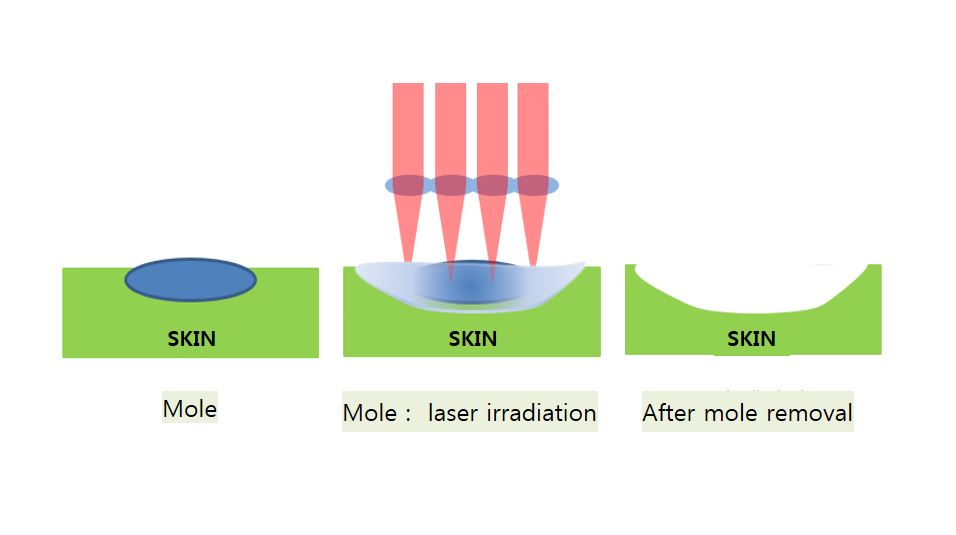
▶ Previous Artlcle: #7-3. CO2 Laser
For example, if hemostasis is needed due to onset of bleeding when a mole tissue is vaporized using the focusing technique in the process of removing a mole, hemostasis may be performed by extending pulse duration and lowering output power through panel manipulation. However, it will be a demanding work.
In this case, the focusing and defocusing technique can be used: by gradually moving the handpiece away from the skin area, the affected tissue comes to be coagulated as a laser beam with 0.1~0.2mm in diameter, when being focused, becomes larger to 0.3~0.4mm in diameter and then power density becomes low. These techniques can also be usefully utilized to remove benign tumor lesions without the need to inconveniently adjust panel parameters through vaporization and coagulation.
[Ad. ▶ COPPER BROMID(Yellow/Green Laser) – Manufacturer: BISON(www.bisonmedical.com)]
In the past, a triple mole removal using long pulsed Er:YAGlaser was popular. This method involves vaporizing a tissue with short pulse and providing additional thermal effect at the base of the tissue from which a lesion is removed with long pulse, thus inducing a slightly quicker, more effective tissue regeneration to prevent scarring.
FIgure 1. Mole removing procedure.
However, since a switch from short pulse to long pulse took operation and time, it was recommended to vaporize a tissue using Er:YAG laser and provide thermal effect by slightly coagulating the base part using CO2 laser defocusing technique. In addition, a similar effect could be produced with CO2 laser alone by applying the focusing and defocusing techniques.

-To be continued





















